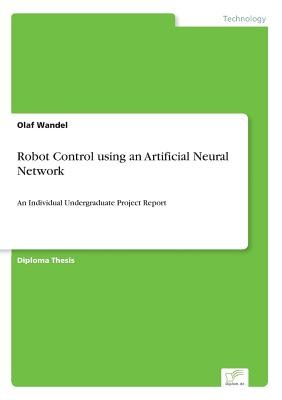
- We will send in 10–14 business days.
- Author: Olaf Wandel
- Publisher: Diplom.de
- Year: 2001
- Pages: 60
- ISBN-10: 3838641418
- ISBN-13: 9783838641416
- Format: 14.8 x 21 x 0.4 cm, softcover
- Language: English
- SAVE -10% with code: EXTRA
Reviews
Description
Inhaltsangabe: Abstract: The aim of the project was to control three joints of an industrial robot in terms of its position, velocity and acceleration. The work considered the necessary hardware, principles of neural networks and controlling techniques. The hardware comprised of a robot with three DC-motors and three optical position encoders, a personal computer with a D/A card for voltage output to the robot and two D/D cards. One D/D card for receiving values from the optical encoders and one for timing. The basics of artificial neural network type perceptrons were described. The special features bias, output feedback, momentum term, adjustment of momentum factor and adjustment of learning rate for this artificial neural network type were considered. An introduction to learning and control structures using artificial neural networks were given. These were controller copying, direct modelling, direct inverse modelling, control with a model and an inverse model, forward and inverse modelling, control action feedback error learning, feedback error learning, learning and control using the plant's Jacobian. The conversion of two learning and control structures, direct inverse modelling and control action feedback error learning, was implemented in software using MS QuickBASIC 4.5". One joint was controlled with a direct inverse model. One joint and all joints together were controlled with control action feedback error learning. The results of experiments with these learning and control structures were documented. Inhaltsverzeichnis: Table of Contents: 1.Introduction8 2.The hardware9 2.1The robot9 2.2The computer and the software11 2.3The PCL-726 D/A card11 2.4The D/D card11 2.5The PCL-812 D/D card12 2.6The G64 rack12 3.Neural networks13 3.1The neuron13 3.2Conversion of neural networks14 3.3Learning principles of neural networks17 3.4Special modifications to the neural network used19 3.5Learning capacity22 4.Teaching and control techniques23 5.
EXTRA 10 % discount with code: EXTRA
The promotion ends in 19d.05:56:47
The discount code is valid when purchasing from 10 €. Discounts do not stack.
- Author: Olaf Wandel
- Publisher: Diplom.de
- Year: 2001
- Pages: 60
- ISBN-10: 3838641418
- ISBN-13: 9783838641416
- Format: 14.8 x 21 x 0.4 cm, softcover
- Language: English English
Inhaltsangabe: Abstract: The aim of the project was to control three joints of an industrial robot in terms of its position, velocity and acceleration. The work considered the necessary hardware, principles of neural networks and controlling techniques. The hardware comprised of a robot with three DC-motors and three optical position encoders, a personal computer with a D/A card for voltage output to the robot and two D/D cards. One D/D card for receiving values from the optical encoders and one for timing. The basics of artificial neural network type perceptrons were described. The special features bias, output feedback, momentum term, adjustment of momentum factor and adjustment of learning rate for this artificial neural network type were considered. An introduction to learning and control structures using artificial neural networks were given. These were controller copying, direct modelling, direct inverse modelling, control with a model and an inverse model, forward and inverse modelling, control action feedback error learning, feedback error learning, learning and control using the plant's Jacobian. The conversion of two learning and control structures, direct inverse modelling and control action feedback error learning, was implemented in software using MS QuickBASIC 4.5". One joint was controlled with a direct inverse model. One joint and all joints together were controlled with control action feedback error learning. The results of experiments with these learning and control structures were documented. Inhaltsverzeichnis: Table of Contents: 1.Introduction8 2.The hardware9 2.1The robot9 2.2The computer and the software11 2.3The PCL-726 D/A card11 2.4The D/D card11 2.5The PCL-812 D/D card12 2.6The G64 rack12 3.Neural networks13 3.1The neuron13 3.2Conversion of neural networks14 3.3Learning principles of neural networks17 3.4Special modifications to the neural network used19 3.5Learning capacity22 4.Teaching and control techniques23 5.


Reviews